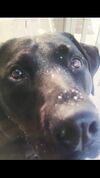BME100 s2017:Group6 W8AM L6
| Home People Lab Write-Up 1 | Lab Write-Up 2 | Lab Write-Up 3 Lab Write-Up 4 | Lab Write-Up 5 | Lab Write-Up 6 Course Logistics For Instructors Photos Wiki Editing Help | |||||||
OUR COMPANY
Our Brand Name LAB 6 WRITE-UPBayesian StatisticsOverview of the Original Diagnosis System The testing of patients for the disease-associated SNP was a lengthy process. Our class, comprised of 10 teams of approximately 6 students each, all together diagnosed 20 patients. In order to split up the work, each team was assigned two patients in which they performed all the tests for the disease-associated SNP. Within each team, each group had the job of assigning specific tasks to specific team members. Within our group, everyone collaborated on all the tests to complete them. For each patient, the teams took three replicates of the DNA in order to perform each test three times. This helped ensure that diagnoses were accurate. Additionally, a positive and negative control sample was used with all tests in order for comparison and to help ensure accuracy. In the PCR reaction, all samples were put in the PCR machine to promote DNA replication of positive samples. For all the testing requiring pipetting of samples, one student was chosen to do all the pipetting in order to help keep track of all the samples and maintain consistency. After this, a fluorimeter was used to analyze the samples for DNA concentration. With this ImageJ software, known concentrations of DNA were used to calibrate it, and three photos per sample were analyzed. Additionally, green dye was added to the samples to help with visibility. Comparing the final diagnoses by the students to the doctors diagnoses, 13 out of the 20 patients were correctly diagnosed. However, out of those patients, there were two inconclusive results, meaning that there were 5 left as misdiagnosed by the students. There were no blank data results.
For calculations 1 and 2, the probability that patients would get a positive final result if one of their PCR reactions came back positive and vice versa (negative PCR reaction and negative final result) was determined. For the positive results, there was approximately a 75% chance that the patient would have a positive final result, where with the negatives there was a little less than half chance. Calculations 3 and 4 determined the probability that there would be a positive final diagnosis and as such the patient would develop the disease if the final test conclusion was positive, and vice versa (negative final test conclusion and negative diagnosis. For the positive, it was most likely a patient would develop the disease given a positive test result with a probability close to 1.00. For the negative, it was slightly lower at around 75%. Human error is most certainly a factor for the PCR results not having a 100% accuracy. One possible human error is cross contamination, where a person pipetting samples forgot to change the pipette tip. Another place where human error could have occurred is with the calibration/use of ImageJ; if this was mis-calibrated then the calculations could have been significantly off. Intro to Computer-Aided Design3D Modeling
Our Design This design was created with the intent of efficiency in mind. With a camera mounted into the back of the box, the images will always be taken with the same precision as the previous, without interfering with access. The camera can be connected to a separate device, or in this case, a laptop, for easy access to label the images that are recieved. Using a phone camera on the holder was inconsistent and it also had to be constantly moved in order to change the slides on the fluorimeter. It was also difficult to keep note of which image was for what concentration of sample. The box prevents light, although shown as transparent, and has a hinged lid that allows the user to access the samples while quickly. For the original fluorimeter itself, constantly having to replace the slides was time consuming. By utilizing an extra long slide, the samples could be placed simultaneously and it only needs to be pushed to position the desired sample in front of the light. The light is angled at a 45 degree angle, so that only one sample will have light shined upon it. Feature 1: ConsumablesEach kit contains:
(more available in sets as an additional cost) The consumables are designed to be more user friendly as well as environmental friendly. By color coding the vials of PCR mix, primers, SYBR green solution, buffer, etc., the lab researcher or teacher using these devices are easily able to differ between the different solutions to help ensure that there is no contamination or faulty errors. With an ample amount of pipette tips being used during experiments to ensure that there is no contamination, it is best that the tips are made of biodegradable material where they are able to eventually be reused, helping to save the environment. Instructions: The vials of PCR mix and primers are to be drawn from to mix the control and patient solutions that will go into the thermocycler. Afterwards, the SYBR Green solution vials are to be drawn from and added to the samples for fluorimeter analysis, and the buffer is used to create various dilutions of the different solutions. The glass slides are used in fluorimeter analysis. The pipette is used here to place the specified amount of PCR product and SYBR Green solution on the slide, placing each sample one dot further down its slide than the one before it so the fluorimeter images compiled together form a spectrum. Once the solution is placed onto the slide with the pipette the slide is placed in the fluorimeter for analysis. The pipette tips themselves are to be placed fully on the end of the pipette, then ejected into the biohazard disposal once they are used. They are not to be reused because this this can cause cross-contamination, but because they are biodegradable their environmental impact is minimal. Feature 2: Hardware - PCR Machine & FluorimeterPCR Machine- This machine is not being redesigned. Although it takes about an hour to read the PCR samples, we want to make sure that the users get the most accurate data, of which they can and that time frame is not extremely long where it would hinder the process of analysis. The size of the machine is also reasonable therefore, we are not making any changes to the device. Instructions: The PCR process is fairly simple from a user perspective, first use the micropipette to add the PCR mix, primers, and DNA samples to the solutions that are to undergo PCR, and then place the samples in the thermocycler. The PCR mix contains all the bases and enzymes to construct the new DNA strands and the primers target the DNA segment that will be used to diagnose the sample, so once they are mixed and the DNA sample is added, the thermocycler initiates possible replication in positive samples. Fluorimeter- The fluorimeter is being redesigned to be more user friendly and more efficient. The current design will be altered to the following: a black box cover which measures about two feet long and one-foot-wide, a foot and a half long slide that moves back and forth housing several slides and an internal camera lens attached to the box which hooks up to the computer. By creating one long moveable slide that is built into the base stand, the user is able to place several slides on it and move it back and forth to get the desired slide under the blue LED light. The cover box is changed to accommodate the new slide and there is also a small camera lens that is attached to the box and hooked up to a computer making it easier to take pictures of the results. The picture can be taken by clicking the mouse on the computer and the picture will appear on the computer screen allowing the user to see the picture of the slide clearly and quickly. These modifications ensure that the process is quick and accurate, with little to no room for error. Instructions: Our redesigned fluorimeter is essentially the same in terms of how it is used, only far easier. The PCR products are pipetted onto their respective slides, one mark down from where the previous sample was placed, and the dye is added. But then the slides are loaded onto a larger slide that moves through the fluorimeter box and slid through one at a time. This allows the user to analyze all the slides at a much faster rate and without as much tinkering to get each slide in exactly the right place without spilling the solution. The other improvement is in the camera. The lens is built into the box and so photos can be taken by clicking the computer mouse with the box fully closed, maximizing photo quality by eliminating excess light, as well as allowing for a sharper image due to the static camera and relieving users of the frustration that is trying to document the fluorimeter with a phone camera.
| |||||||








